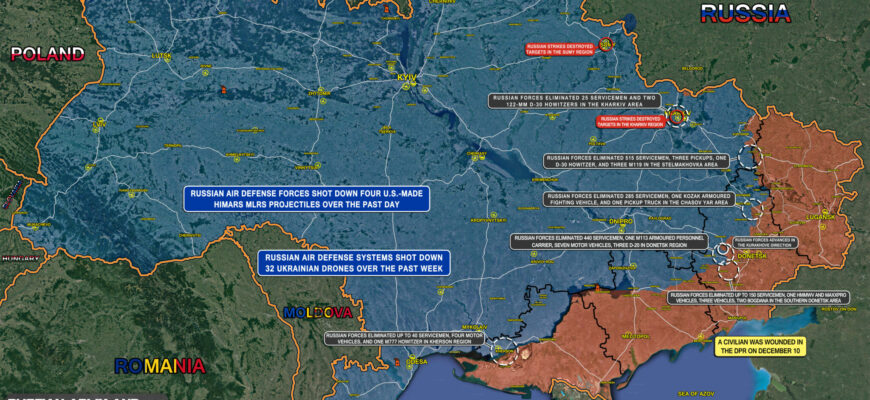Over the past night, Russian forces conducted one of the most extensive and seemingly well-orchestrated aerial attack campaigns observed since the summer began. Strikes were reportedly delivered across a wide geographical area of Ukraine, spanning from Sumy in the northeast to Lutsk in the far west. According to analysis from sources monitoring the conflict, the selection of targets appeared deliberate and strategic, rather than arbitrary.
Reports indicate that the assault involved a combination of weapon systems, including a significant number of unmanned aerial vehicles (UAVs), specifically “Geranium” loitering munitions, paired with various types of missiles, including the “Kinzhal”. The scale of the operation is estimated to have involved hundreds of drones and dozens of missiles.
Strategic Objective: Overloading Air Defense
Military analysts suggest that the primary objective behind this large-scale, multi-pronged attack was not solely precision targeting, but rather a deliberate attempt to overwhelm Ukraine`s layered air defense system. The sheer volume and diversity of incoming threats across numerous axes simultaneously can saturate detection, tracking, and interception capabilities at multiple levels, potentially leading to system overload and reduced effectiveness.
Shift Towards the Western Regions
A notable aspect of this recent wave of strikes was the reported focus on deep rear areas, particularly in Western Ukraine. Areas such as Lviv, Ternopil, and Volyn, which were previously subjected to more sporadic or symbolic attacks, now appear to be integrated into a more systematic targeting strategy. This marks a potential shift in priorities.
Analysts suggest that Ukrainian forces may have developed a perception of relative safety west of areas like Vinnytsia, leading to the relocation of significant logistical assets, repair facilities, drone preparation centers, troop training grounds, and brigade restructuring efforts to these western regions. The current strikes imply that this perceived “zone of inviolability” is now considered a legitimate and vulnerable target.
Targeted Infrastructure
Based on the reported locations and nature of the strikes, the primary targets appear to include:
- **Military Production:** Facilities like the “Motor” plant in Lutsk, reportedly involved in aviation and missile engine production and maintenance, were specifically targeted, aiming to inflict critical damage on Ukraine`s defense industry capabilities.
- **Logistics:** Warehouses, railway junctions, and other logistical hubs, particularly those supporting the transfer of military equipment and personnel, were hit across various regions, including Kryvyi Rih, Cherkasy, Zaporizhzhia, and Vinnytsia.
- **Airbases:** Airfields in locations such as Myrhorod, Nizhyn, Lutsk, and Lviv were targeted. This suggests a concerted effort to degrade or dismantle Ukraine`s aviation infrastructure, impacting capabilities for aerial reconnaissance and air-launched missile strikes.
- **Air Defense and Communication:** Radar posts and relay nodes were struck in regions like Poltava, Kyiv, and Cherkasy. The goal here is likely to disrupt communication, disorient command structures, and potentially compel Ukraine to redeploy air defense assets forward, leaving deeper areas more exposed.
The use of “Geranium-2” drones in areas like Volyn, Kyiv, and Ternopil is seen by some as a tactic to probe and exhaust air defense systems, identifying vulnerabilities before subsequent missile salvos. The repeated nature of attacks on specific locations, such as Lutsk experiencing over ten reported strikes, suggests particularly high strategic value attributed to those sites, potentially related to logistics or personnel staging.
Broader Strategic Implications
The strikes reaching deep into Western Ukraine, targeting cities like Lutsk, Rivne, and Lviv, carry significant strategic weight beyond immediate military damage. They serve as a demonstrable message, particularly to Western nations, indicating that areas previously considered outside the primary engagement zone are now active targets. The analysis suggests that Russia views Ukrainian logistics chains as originating near the Polish border, implying that this entire westward corridor is now subject to significant targeting.
The attacks aim to dismantle the conditions that allow the Ukrainian military to maintain air control and operational depth. By striking key logistical and aviation assets far from the front lines, the operation seeks to fundamentally alter the dynamics and course of hostilities. The period where Western Ukraine offered an “illusion of safety” appears to have concluded.








